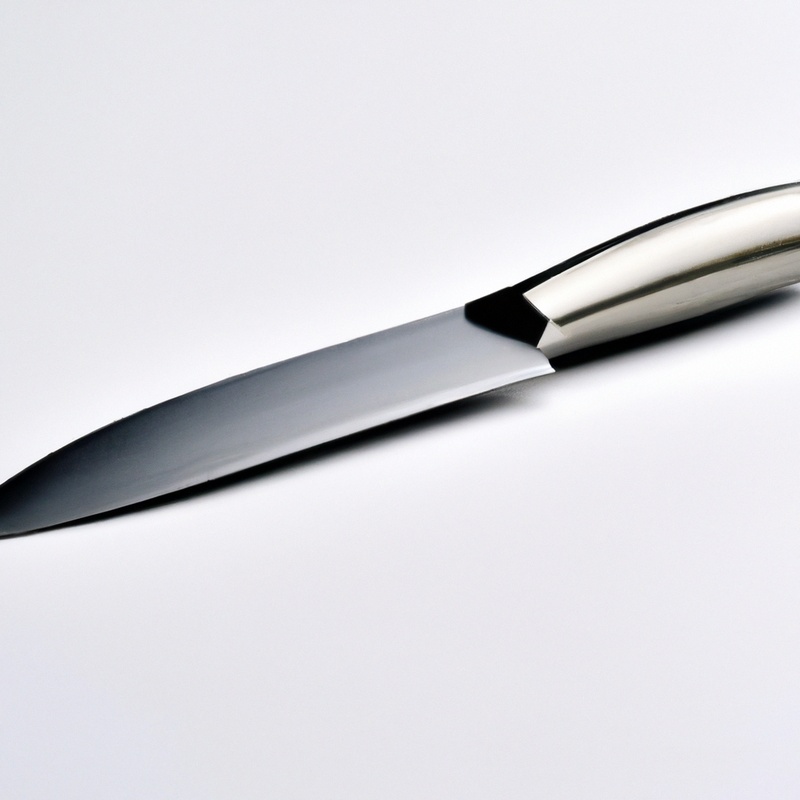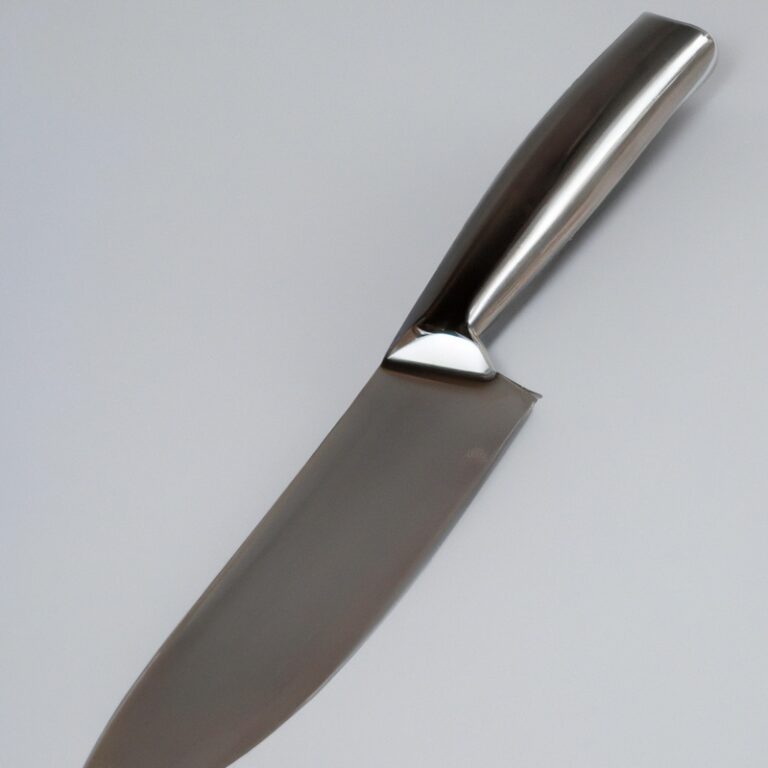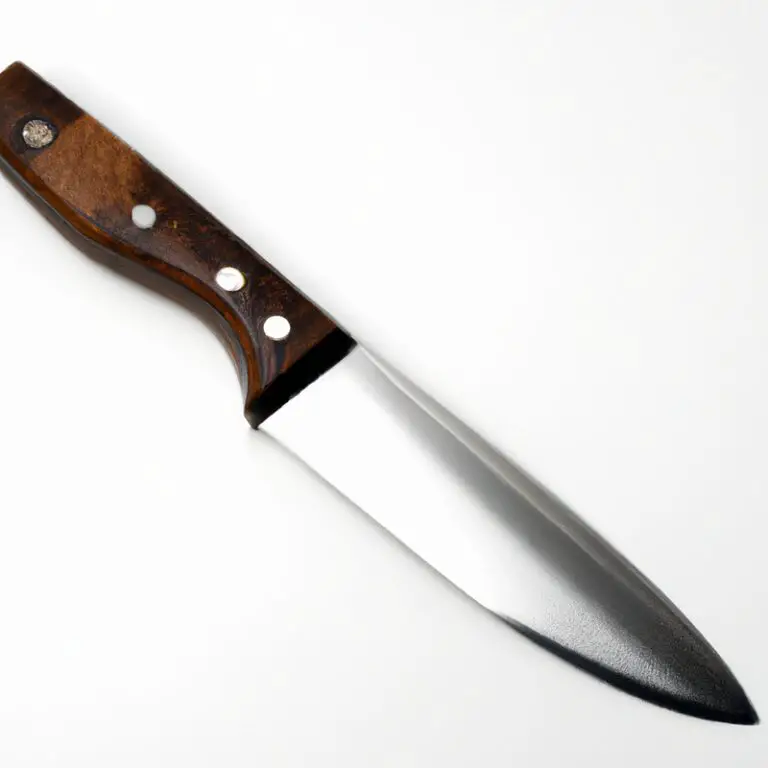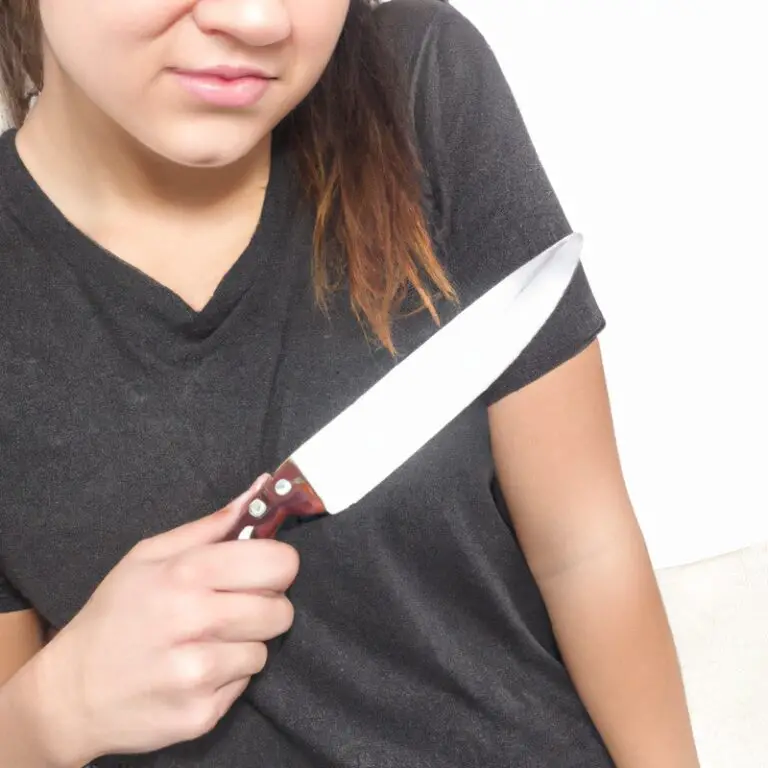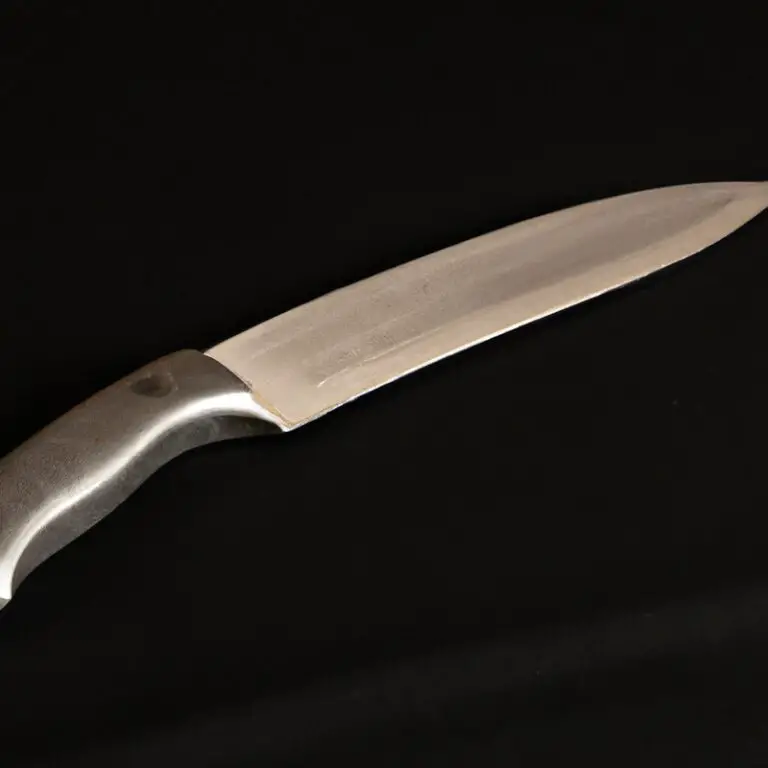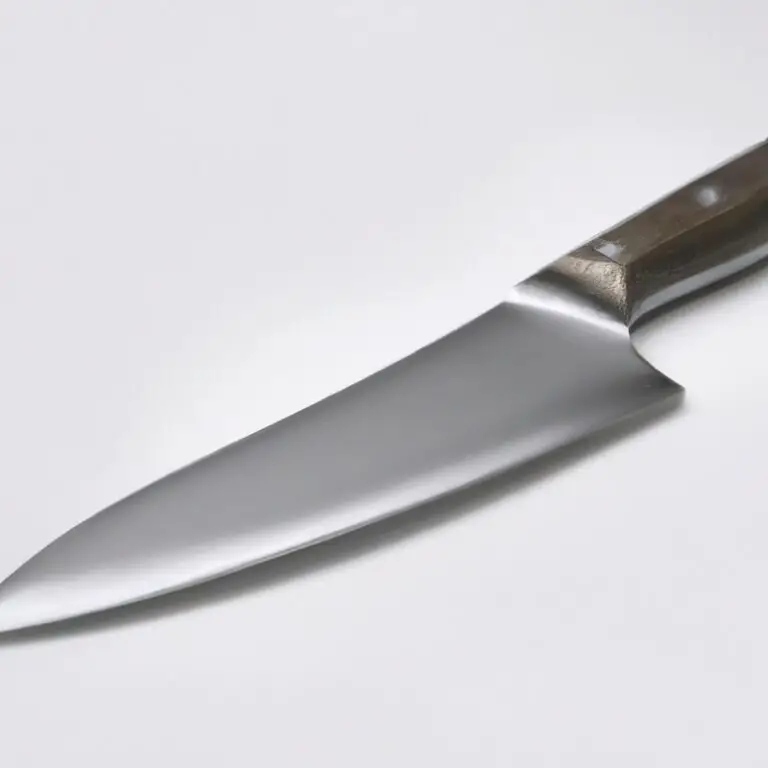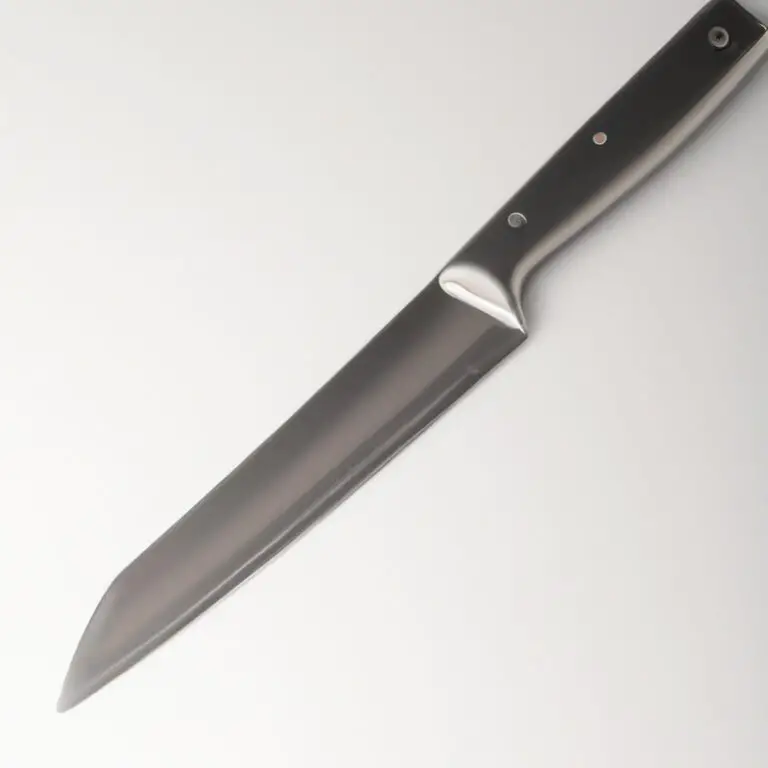What Are Some Recommended Cutting Boards For Use With a Paring Knife? Slice And Dice With Precision!
Key Takeaways:
- Choosing the right cutting board is crucial when using a paring knife to ensure safety and effectiveness in your food preparation.
- Wooden cutting boards are recommended for use with paring knives as they provide a soft surface that won’t dull the blade.
- Plastic cutting boards are also suitable for paring knife use, but it’s important to choose a high-quality, non-toxic option to avoid bacterial buildup and premature wear.
- Avoid glass or metal cutting boards when using a paring knife, as they can damage the blade and present a higher risk of injury.
Are you tired of ruining your paring knives on the wrong cutting board? Look no further, because I’m here to guide you on selecting the perfect cutting board.
Whether you prefer wood, bamboo, plastic, glass or composite, each material has its unique benefits and drawbacks.
In this article, I’ll discuss the advantages and disadvantages of each material, as well as tips for maintaining your cutting board. Moreover, I’ll recommend some top brands and models of cutting boards tailored to your needs.
Say goodbye to blunt knives and hello to a prolong lifespan for your kitchen tools!
| Cutting Board | Material | Size (inches) | Price Range |
|---|---|---|---|
| John Boos Maple Wood Edge Grain Reversible Cutting Board | Maple wood | 18 x 12 x 1.5 | $75-$166 |
| OXO Good Grips Carving and Cutting Board | Non-porous polypropylene | 14.5 x 10.5 x 0.5 | $14-$25 |
| Totally Bamboo 3-Piece Bamboo Cutting Board Set | Bamboo | 6 x 8, 8.5 x 11, 9.5 x 13 | $14-$25 |
| Teakhaus Rectangle End Grain Butcher Block Cutting Board | Teak wood | 16 x 12 x 1.5 | $80-$120 |
Wood cutting boards: durable option for paring knives
Wood cutting boards are an excellent option for using with your paring knife. They are sturdy, durable, and gentle on your blade edges.
Furthermore, they have natural antimicrobial properties, making it less likely to harbor bacteria.
Wood cutting boards are available in several types, including teak, oak, and maple. They require regular maintenance to keep them in good condition.
Oiling the surface regularly will help retain their natural beauty and preserve their integrity over time.
It is essential to keep them dry as well to prevent any warping or splitting. With proper care and maintenance, wood cutting boards can last for many years, ensuring you have a reliable surface to chop and slice fruits and vegetables with your paring knife.
Bamboo cutting boards: environmentally friendly and knife-friendly
Bamboo cutting boards are an environmentally friendly and sustainable option for paring knives. Bamboo is a fast-growing and renewable resource that does not require pesticides or fertilizers to grow.
This makes bamboo cutting boards an excellent choice for those who prioritize sustainability in their kitchen.
In addition to being environmentally friendly, bamboo cutting boards are also knife-friendly. The hard and dense surface of bamboo resists knife marks, which can lead to bacterial growth, and makes it a durable option for paring knives.
Moreover, bamboo is naturally antimicrobial, which means that it resists the growth of bacteria, making it a hygienic choice for cutting boards.
However, it is still important to clean and maintain bamboo cutting boards properly to ensure their longevity. When shopping for bamboo cutting boards, it is essential to look for high-quality products that are made from organically grown bamboo and do not contain any harmful chemicals.
It is also important to avoid cutting boards that have been glued together with formaldehyde-based adhesives, as these can be toxic and harmful to both your health and the environment.
Overall, bamboo cutting boards are an excellent option for those who want an environmentally friendly and knife-friendly cutting surface for their paring knives.
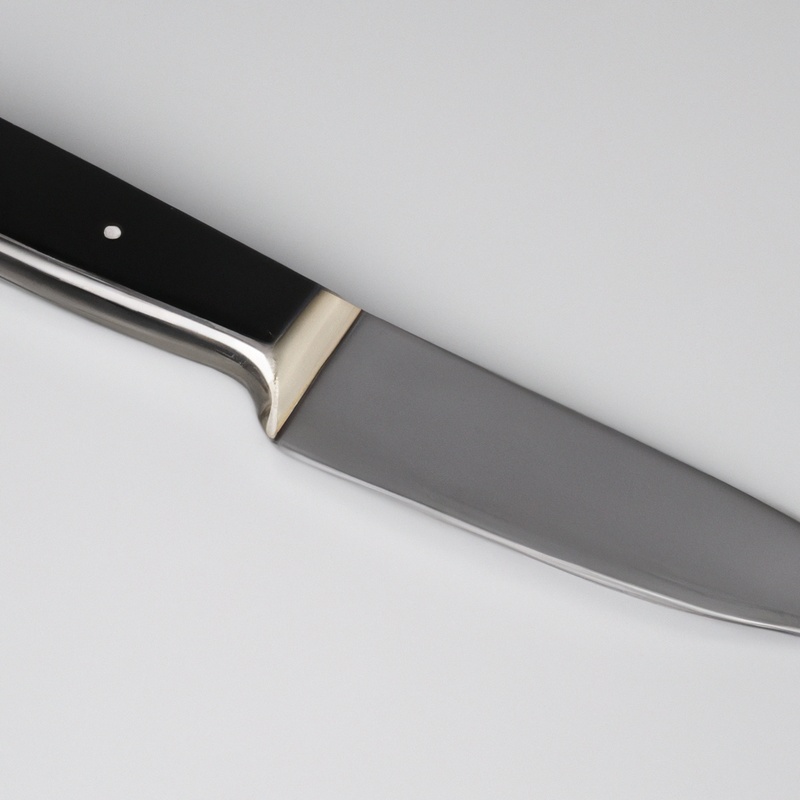
Plastic cutting boards: easy to clean and sanitize
Plastic cutting boards are a popular choice among chefs and home cooks due to their ease of cleaning and sanitizing. These cutting boards are made of non-porous material, which means that they don’t absorb moisture or bacteria easily, making them simple to clean.
Plastic cutting boards are also lightweight and affordable compared to other materials.
Additionally, they can come in a variety of colors to help prevent cross-contamination when preparing different types of food. Although plastic cutting boards are known for their durability, they can scratch easily with prolonged use, so it’s essential to replace them when they show signs of wear and tear.
Overall, plastic cutting boards are an excellent option for those looking for a no-fuss, affordable, and easy to clean cutting board for paring knives.
Glass cutting boards: hygienic, but can damage knives
Glass cutting boards are known for their hygienic properties as they do not absorb liquids or bacteria. However, they can damage your knives due to their hardness and lack of give.
The hard surface of the glass can chip and dull the blade of your paring knife, leading to the need for frequent sharpening or replacement.
Additionally, glass cutting boards can be loud and slippery, making it difficult to keep the knife in place while cutting. Therefore, it is recommended to avoid using glass cutting boards with paring knives and instead, opt for more knife-friendly options such as wood, bamboo, or composite cutting boards.
Composite cutting boards: mixture of materials to protect knives
Composite cutting boards are made of a mixture of materials, including wood fibers, plastic, and resin. These boards are designed to protect your knives from dulling, yet maintain their durability and long-lasting qualities.
The combination of materials in composite cutting boards means they are dishwasher safe, easy to clean, and lighter than wood cutting boards.
Additionally, they’re designed with a surface that keeps your knife sharp, reducing the chances of damage to both your knife and your cutting board. Overall, composite cutting boards are an excellent choice for protecting your paring knives and prolonging their lifespan.
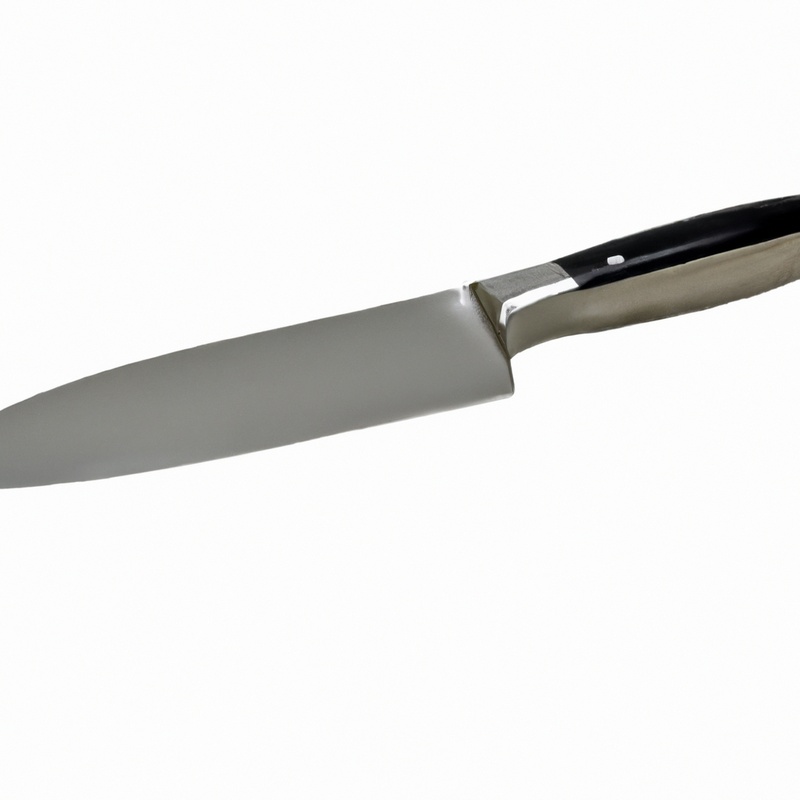
Maintaining your cutting board: tips for extending its lifespan
Maintaining your cutting board is crucial to extend its lifespan and keep it safe for food preparation. Here are some tips to help you maintain your cutting board:
- Clean your cutting board with warm soapy water after each use, use a sponge or a brush to scrub away food particles.
- Dry your cutting board completely with a clean cloth or allow it to air dry.
- Avoid using abrasive cleaners or steel wool as they can damage the surface of the cutting board over time.
- Oil your wooden cutting board on a regular basis to prevent it from drying out and cracking. Use mineral oil, beeswax, or a food-grade oil recommended by the manufacturer.
- Use separate cutting boards for different types of food to prevent cross-contamination.
- Avoid leaving your cutting board exposed to direct sunlight or high heat as it can cause warping.
- Replace your cutting board if it has deep scratches, stains, or cracks that cannot be removed or repaired.
By following these tips, you can extend the life of your cutting board and ensure its safety for food preparation.
How to choose the right cutting board for your needs
When it comes to choosing the right cutting board, there are several factors to consider based on your needs. Here are some key points to keep in mind:
- Material: Different materials come with different pros and cons. Wood is durable, bamboo is eco-friendly, plastic is easy to clean, glass is hygienic but can damage knives, and composite materials offer knife protection.
- Size and thickness: Choose a board that’s large enough to handle your cutting needs but not too heavy or cumbersome to move around. A thickness of at least 1 inch will provide stability and prevent warping.
- Knife-friendliness: Opt for a board that won’t dull or damage your knives. Softer materials like plastic and bamboo are gentle on your blades, while harder materials like glass and some composites can be abrasive.
- Maintenance: Consider how easy it is to clean and maintain your board. Wood and bamboo require more upkeep, while plastic and glass are dishwasher-safe.
By taking these factors into account, you can choose a cutting board that meets your needs and helps you get the most out of your paring knife.
Benefits of having multiple cutting boards for different tasks
Having multiple cutting boards for different tasks can bring several benefits to your kitchen, including:
- Prevent cross-contamination: Using one cutting board for raw meat and another one for vegetables can prevent the transfer of harmful bacteria and keep your food safe to eat.
- Preserve the lifespan of your knives: Different types of cutting boards can have varying levels of hardness, which can either dull or preserve the blade of your knives. Using the right cutting board for the task can help maintain the sharpness of your knives for longer.
- Keep your kitchen organized: Having separate cutting boards for different tasks can help you keep your kitchen organized and minimize the risk of confusion or mistakes.
- Enhance food flavor: Using different cutting boards for different foods can prevent flavor transfer, which can enhance the taste of your dishes.
By investing in multiple cutting boards for your kitchen, you can not only improve your food safety and preparation but also extend the lifespan of your equipment and elevate your culinary experience.
Disadvantages of using the wrong cutting board with a paring knife
Using the wrong cutting board with a paring knife can lead to several disadvantages. Firstly, using a board that is too hard or too soft can dull the blade and affect its sharpness.
Secondly, using a board made of glass or stone can cause the knife blade to chip or become damaged, rendering it useless.
Additionally, using a board that is too small can be dangerous as the knife may slip off the board and cause injury. Finally, using an old or dirty cutting board can cause bacteria to build up, which can contaminate the food and cause illness.
Therefore, it is essential to choose the right cutting board to protect your knife and ensure food safety.
Top brands and models of cutting boards for paring knives
Top brands and models of cutting boards for paring knives include:
- John Boos Maple Wood Edge Grain Reversible Cutting Board: This cutting board is durable and aesthetically pleasing, making it a top choice for chefs and home cooks alike.
- Totally Bamboo 3-Piece Cutting Board Set: Made from eco-friendly bamboo, this set includes three boards with different sizes for various tasks. It is knife-friendly and easy to clean.
- OXO Good Grips Utility Cutting Board: This plastic cutting board is dishwasher safe and has non-slip edges for safety. It is ideal for those who prioritize convenience and hygiene.
- Epicurean Cutting Board: This composite board is made from sustainable materials and designed to prevent knife damage. It is dishwasher safe and comes in various sizes.
- Joseph Joseph Index Chopping Board Set: This set is color-coded and includes four cutting boards for different food groups to prevent cross-contamination. It has non-slip feet and is dishwasher safe.
When choosing a cutting board, it’s important to consider the material, size, and maintenance needs. Investing in a high-quality cutting board can improve the lifespan of your knives and make meal preparation more efficient.
Final Verdict
Choosing the right cutting board for your paring knife is essential to ensure precision and longevity for both the knife and the board. By considering factors such as durability, knife-friendliness, hygiene, and maintenance, you can make an informed decision when purchasing a cutting board.
Using top brands like John Boos, Totally Bamboo, and OXO, can further guarantee the quality and reliability of your cutting board.
Remember to prioritize the safety and functionality of your cutting board, as well as using multiple boards for different tasks to avoid cross-contamination. With these tips, you can elevate your cooking game and enjoy the benefits of a good cutting board for years to come.

